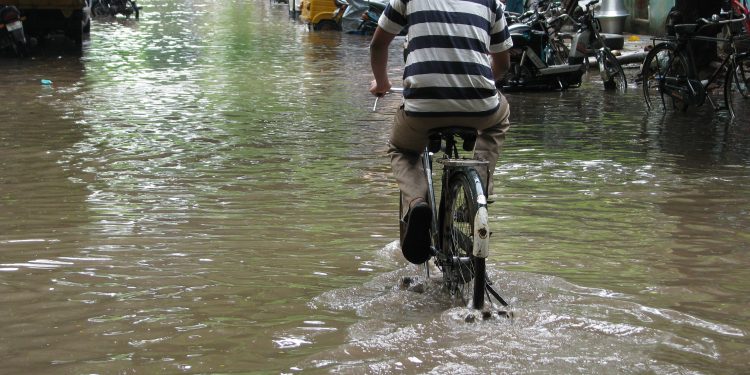Devastation in Chennai: Result of Unusual Weather and Unplanned Infrastructure

Introduction:
The Chennai floods, which have been wreaking havoc since the past one week, do not seem to retreat, as the weather forecast has predicted heavy rains in the coming days. Due to the floods, around 450 people have died, several have been displaced, there have been huge losses of property and business, educational institutions and offices have been shut and public transport has become non-functional.
Why is this happening?
The reason for the floods is El Nino, which is a weather phenomenon, that results in a warmer than usual oceanic temperatures. However, this year, the impact of El Nino was stronger than usual, with 2015 being recorded as the hottest year ever. The temperature was warmer in the eastern Indian Ocean and cooler on its eastern side, due to which temperatures were higher than usual in the southern portion of the Bay of Bengal, resulting in torrential rainfall in the southern part of the country.
Aftermath:
The impact of the floods has been disastrous. Other than the hundreds of people who have lost their lives, firms have predicted losses of around $40-50 million. Many people have moved out to cities like Bangalore for jobs. Mobile services have been disrupted and flights and trains have been delayed. Rescue operations have also not been much of help because of miscommunication between the Army and government officials. While basic food supplies weren’t available, alcohol was been sold throughout, which shows the government’s insensitivity, as it is more concerned about revenue than helping the citizens. Also, the ruling government, AIADMK, has been more interested in garnering publicity, as party officials have been sticking photos of Jayalalitha, the Chief Minister of the state on food packets and on the streets, while the Opposition, DMK, has wasted no time in blaming Jayalalitha for not visiting the victims’. Some people have also been spreading false rumors of water being released from one of the lakes, sending the residents into panic.
Problems with infrastructure:
While it is not possible to predict natural calamities like floods, the infrastructure of a city can be built in such a way so as to avoid the large number of deaths and destruction of property. There has been a spurt in the number of illegal residential colonies in Chennai, due to which the city has become highly congested and has resulted in accumulation of water in several areas, making it impossible for people to escape. The drainage system of the city is incapable of taking in huge quantities of water, causing the floods. Pollution is another factor that contributed to the disaster, though this is an issue which plagues almost all Indian cities.
What can be done?
The floods in Chennai have exposed the various flaws in the civic infrastructure and the environment of the city. To avoid a huge calamity like this in future, there should be a crackdown by the government to demolish all the illegal residential colonies that have come up in Chennai, so that the congestion reduces. The drainage system should be improved, and vehicles which are environment friendly, should be introduced. In this way, natural calamities, though will become more frequent in the future, can be better dealt with, and many lives can be saved.
[Image Attribute: McKay Savage]




